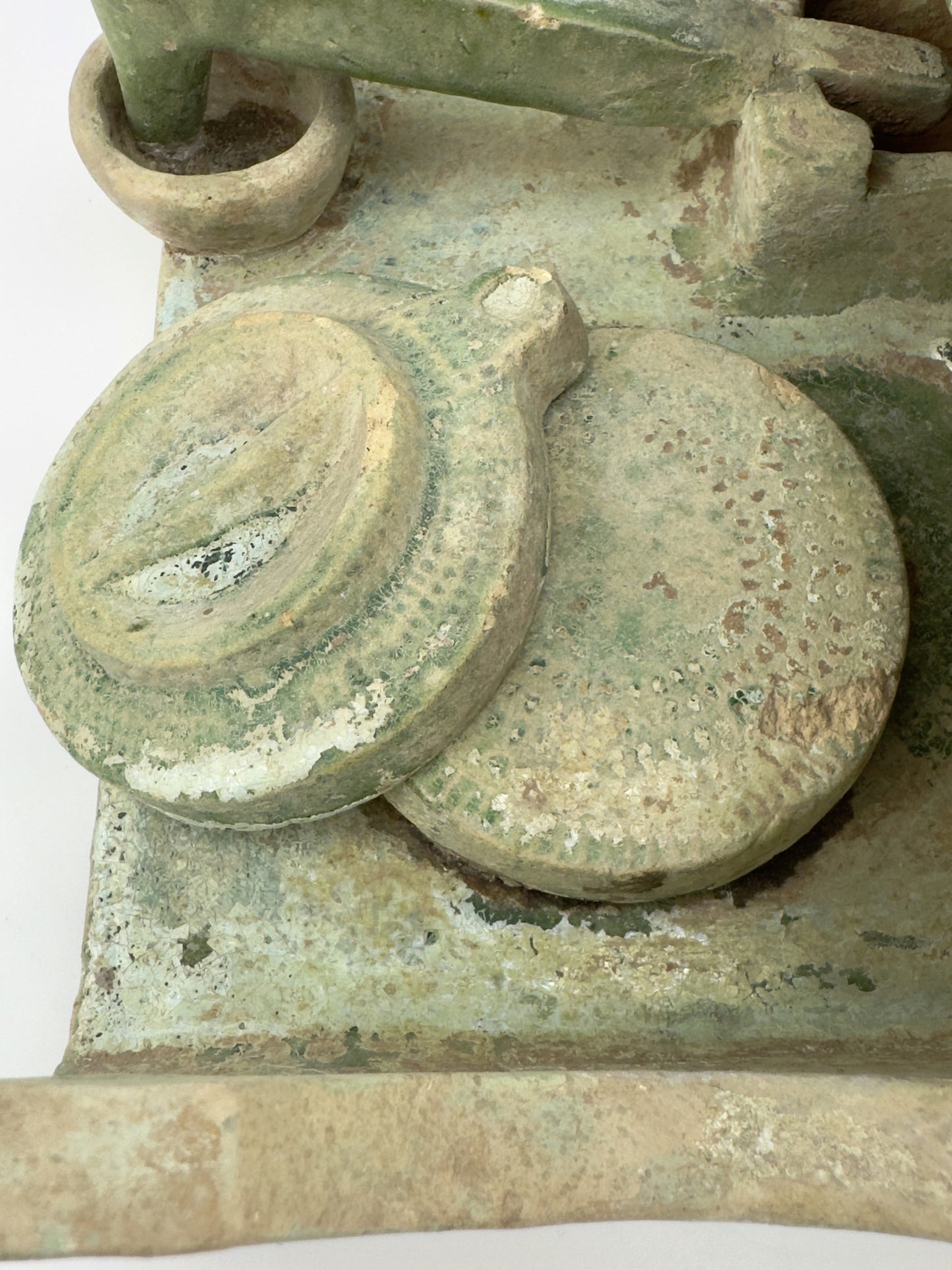AUA Oriental Art
Green Glazed Milling Shed, Eastern Han Dynasty
Green Glazed Milling Shed, Eastern Han Dynasty
Couldn't load pickup availability
Made from the standard orange earthenware body of Han green glazed tomb models, this miniature milling station features a circular millstone and a foot-operated mortar and pestle grain pounder under its shed roof. Both of these farm tools can still be seen in use throughout rural China. Han tombs provide an abundance of agricultural models reflecting the belief that agriculture was fundamental to the prosperity of the country.
Period : Han Dynasty (206 BC - 220 AD)Medium : Earthenware with Green glaze
Dimension : 25.4cm x 23.7cm
Provenance : The piece was acquired in Hong Kong in the year 1999.
Condition : Good
Reference :
1) The Metropolitan Museum of Art - Accession Number: 1994.605.19
https://www.metmuseum.org/art/collection/search/44320
2) Minneapolis Institute of Art - Accession Number:89.43.2.1
https://collections.artsmia.org/art/3850/milling-shed-china
* Han Dynasty Pottery
Han Dynasty pottery, originating from one of China's most significant historical periods (202 BCE – 220 CE), is renowned for its technological and artistic achievements in ceramic production. These artifacts typically feature a distinctive green glaze, although other colors were also used. The pottery often includes intricate decorative motifs, such as animals, mythological figures, and geometric patterns.
The craftsmanship during the Han Dynasty was advanced, with pottery techniques that were innovative for the time. These pieces were not only utilitarian but also held ceremonial and symbolic significance. The shapes and designs of Han Dynasty pottery vary, including items like urns, vases, and figures, reflecting both the daily life and the spiritual beliefs of the period.
Share


































